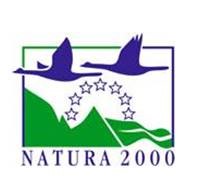- Mijn PXL
- Mijn SLB
- Webmail studenten
- Studiegids 22-23 (programmatabellen)
- Studiegids 23-24 (programmatabellen)
- Course Catalogue 22-23 (English Study Programmes)
- Course Catalogue 23-24 (English Study Programmes)
- Academische kalender
- Jaarplanning
- Herinschrijvingen
- Afsprakenprogramma
- Lesroosters
- Onderwijs- en examenregeling
- Blackboard
- PXL Career Center
- Citrix
- EPOS
- PingPing
- PXL-Bibliotheek
- PXL-Catering
- PXL in de media
- PXL in beeld
- PXL-Facebook
BullFrog: The sterile triploid method for population control of aquatic invasive fauna: pilot project on American bullfrog
In Flanders prevention measures related to pathways of introduction of invasive alien species (IAS) are being identified and tackled, risk assessments are carried out and early detection and rapid eradication is giving attention. However, the management of established populations is much more complicated and needs special coordination and methods. Successful management of widespread populations, such as of American bullfrog (Lithobates catesbeianus) in the valley of the Grote Nete, are hard to control with the current means.
The American bullfrog is introduced in Europe and Belgium for consumption and ornamental (garden ponds) reasons. Tsiamis et al. (2017) list populations of American bullfrog in Belgium, France, Italy, Germany, Slovenia, Greece (Crete) and the United Kingdom. In Flanders in the valley of the Grote Nete the species is present over a distance of more than 50 km, in more than 400 ponds and an area of 152.000 ha. The dispersion in upstream and downstream direction is still progressing rapidly. Apart from this large metapopulation, several isolated populations are present in Kasterlee, Arendonk, Hoogstraten en Huldenberg.
In the preparation of this project the technique of producing sterile triploid individuals of American bullfrog has been elaborated. The development of the innovative technique started within the Intereg INVEXO-project (2009 - 2012). The project report includes a literature survey on the ecology and impact, the distribution in Flanders and the Netherland, the best management options and protocol and aspects of prevention and communication. The technique was further refined in a project financed by the PXL University College (2013-2016) and the Agency for Nature and Forests (ANB)/Province of Antwerp (2016-2018). In order for the sterile triploid method to be successful, 90 % of treated clutches should result in infertile triploids. This goal has been achieved and the sterile triploid males are sexually active and calling.
The implementation of the method will start in the project area Balen-Olmen (Scheps) where about 17 ponds are highly infected with American Bullfrog (46 adult/ha) and move downwards in the valley. The project area is a part of the ‘Grote Netewoud’, which is situated in the SAC BE2100040 Valley of the Grote Nete. The ponds in Scheps are mainly owned and managed by the Agency for Nature and Forest Management (ANB) and in Griesbroek by the NGO Natuurpunt. Some privately owned ponds are present as well.
The pilot will be integrated in the running efforts to control or eradicate populations of American bullfrog in Flanders. Information campaigns are organised by the partners on a regular base. Citizens have been and are still being informed and the pathways of dispersion within Flanders and the Netherlands have been identified and controlled. Efforts to eradicate isolated populations in Flanders, with reproduction in less than 5 ponds, have proven to be unsuccessful in the last decade.
Partners in this project are ANB, Provincie Antwerpen and PXL.
Project informatie
- Code nog in te vullen.
Sarah Descamps
Tony Remans
Caroline Windmolders
Alain De Vocht
Timon Smeets










